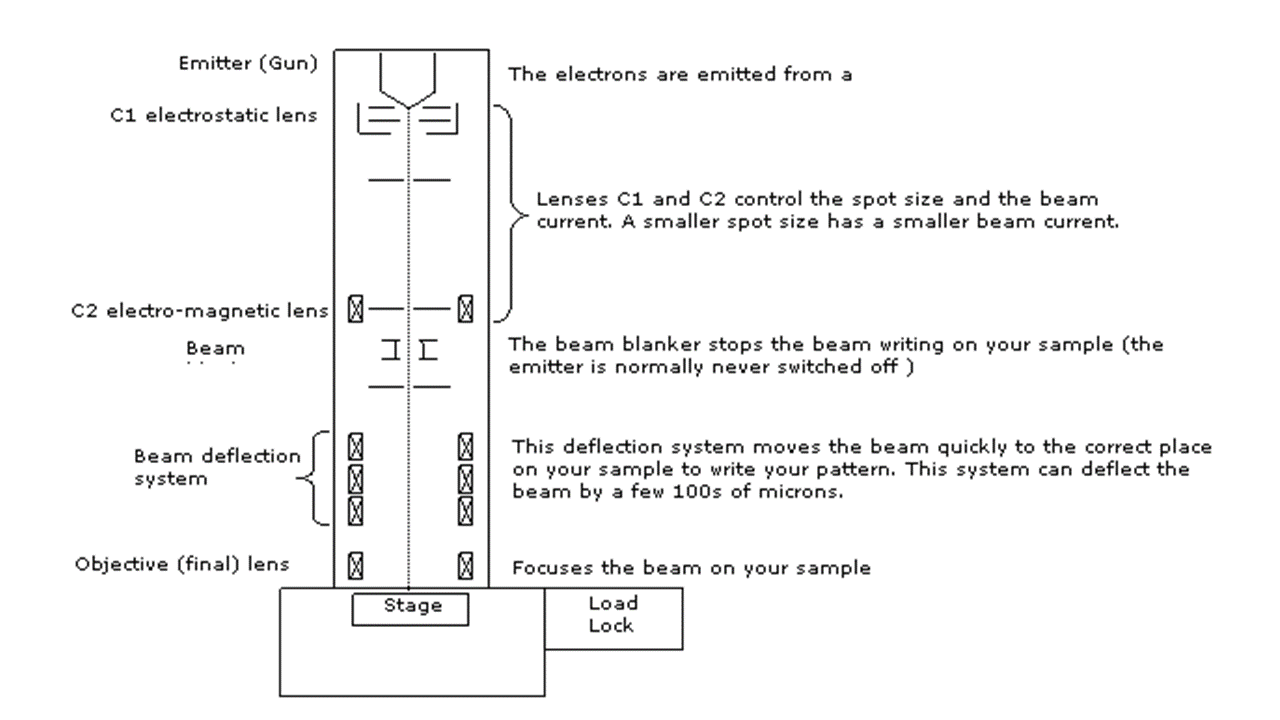What is an electron beam lithography (ebl) system?
An electron beam lithography system is one that uses a focused beam of electron to create a pattern in an electron sensitive resist. The beam is scanned across the wafer using an electromagnetic deflection system. The machine we have uses a vector scan system which means the beam is only deflected to the areas where it needs to expose part of the pattern and never to areas where there is nothing to expose.
The advantages of the ebl are resolution, placement and flexibility. The machine allows you to access length scales not practically available with any other lithography technique. It also allows you to overlay different levels of lithography very accurately, <20nm mean+3σ. The pattern is defined only as a software mask which means it is very easy to change designs without having to make new mask.
The disadvantage is that it is slower compared to photolithography performed with mask aligner or a stepper. It is also typically slower than photolithography performed with a laser writer. This is because ebl is inherently a serial process; with the pattern having to be exposed 1 pixel at a time, and the size of the pixel is much smaller than on a laser writer, so there are many more pixels in ebl.
What bits make up an ebl system?

Writing field size & stitching
An ebeam system writes on your sample by deflecting the electron beam with a set of electromagnetic deflection coils. These coils can only deflect the beam by a few 100 microns. To make larger patterns on a wafer, once the deflection reaches this maximum value, the stage then has to move and start writing the next bit. The machine will always finish writing a block before moving the stage because deflecting the beam electronically is fast, whereas moving the stage is relatively slow.
The maximum area that can be written without moving the stage is called the block size. This varies depending on how the machine is configured; at 100kV our machine can deflects the beam up to a maximum of 256microns.
When the stage is moved to continue the writing, the matching together of the two writing blocks is called stitching. If the machine is calibrated correctly the machine should stitch the writing blocks together almost perfectly. Typically our machine stitches the blocks (fields) together with accuracy of 18nm Mean+3xsigma. The image below shows the border between 2 blocks of writing. The error in aligning the 2 blocks is <10nm.

Dose and writing frequency
The writing frequency is the frequency with which the beam is stepped from one pixel to another when writing a pattern and can vary from 0.5 kHz to 50MHz. The faster the better. It is calculated from the measured beam current, the known pixel size and the dose required to expose the resist correctly. Usually (hopefully!!) you will know the dose required for your process (this will be determined by an exposure test) and the minimum feature size you require, this is the starting point required to calculate the writing frequency,


Note that the units in brackets should correspond to the units in which you enter the numbers into this formula. The answers will then be in either MHz or μC/cm2 which are the normal units for used in ebeam.